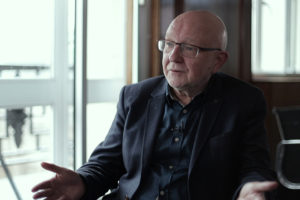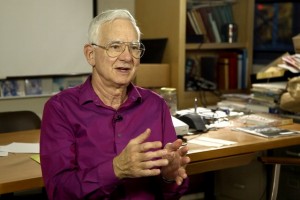Causal Hypotheses in Medicine
Professor of Philosophy of Science John Worrall on the difference between correlation and causation, controlle...
The terms multimedia, crossmedia and transmedia storytelling are widely used all over the world but we still have lots of confusion about what could differentiate them. Actually there are several occasions in which people are using them as synonyms, but they are not. So let’s take a look into each one of them. Let’s start with multimedia. First, we have the prefix «multi», which is not difficult to understand, it means «many», «several», «numerous». And then we have the word «media». There are different understandings and definitions of media itself, but I work with one definition that I think is relevant for us which is from Lisa Gitelman, a historian from the US, and she basically defines media as something that involves two dimensions. The first dimension is the understanding of media as means of communication. It involves the physicality of it, the material aspect of it. But then she talks about the second dimension which is related to the social and cultural aspects that are directly involved with these means of communication. Media is not just related to film, print media, mobile media, it’s not just the physical means of communication, it also involves all the relations around it, social and cultural relations.
So multimedia. Actually, the term multimedia is kind of old, it comes from the 60s. In 1966, the artist Bob Goldstein in the U.S. in Long Island produced a lighting show which was a kind of combination of light and visuals together, and at that time to describe his artistic production he called it multimedia. But since the 1990s we can have multimedia being used as something to describe when we have text, audio and visual elements together. So the main example of multimedia at that time was the CD-rom when we had a physical CD that we could put in our computer and then we could read stories, watch videos, have the sound, have the pictures, have all the elements together. Nowadays, with the Internet, basically the majority of the websites that we access today are multimedia, because they somehow have texts, they have audio and visual elements put together and presented simultaneously. So this is the idea of multimedia.
And again, if we talk about the prefix, we have the prefix «cross», which implies the idea of movement, and «cross» also implies the idea of intersection, in the sense that different media platforms are somehow intestecting, But what is essential for us to understand, especially in relation to transmedia storytelling that we will talk about soon, is that cross media is a broader term that can embrace several different kinds of projects, but the main idea is that although we have in cross media productions multiple media platforms involved, we have normally in most of them the repetition of content and not the expansion of content. So here we will be talking about adaptations, for example. When we have a book and this book is transformed, adapted to be a movie. We have basically the same contents but they are being presented in two different media platforms. This is the main idea of crossmedia.
Although we can clearly define what is crossmedia and what is transmedia storytelling, when we actually have the examples, when we have the real projects being produced, it’s not that simple, because the complexity of this kind of projects that involve innumeros parts spread across many different platforms, we can have things that are more complicated than just saying «what is repeated is not transmedia storytelling, what is new is transmedia storytelling». One classical example is Harry Potter. Harry Potter is started mainly as a crossmedia project, in the sense that we have the series of books, and each book was then adapted to be a movie. But nowadays the project expanded so much that we have much more interesting things going on inside the Harry Potter universe. For example, a few years ago the author of HP came up with the Pottermore. The Pottermore is an online platform in which she put one hundred thousand new words about HP. She had all these stories and other information about HP which she wrote but never published before and then she made this available for the public, And this is definitely something much more connected to the transmedia storytelling than the crossmedia. Another example we could think about is the Lord of the Rings. It’s the same: we had the books, the books were adapted into movies, but nowadays things just had spread so much that we have video games, for example, with totally new perspectives, and bringing new elements to the story; that it’s difficult for us to say it’s just crossmediatic. So it’s not so simple, this is a stew, an open aspect related to the reality of multiplatform productions.

Professor of Philosophy of Science John Worrall on the difference between correlation and causation, controlle...

Physicist David Pritchard on private tutors, academic performance, and personalized education

On biological collections, biobanks, and stakeholder interests